Concave Hexagon
A concave hexagon is a six-sided polygon with at least one interior angle greater than 180 degrees. This means that at least one of the angles inside the hexagon "dips inwards" rather than "bulging outwards".
Identifying a Concave Hexagon
To identify a concave hexagon, you can draw a sketch of the hexagon and measure the interior angles. If you find at least one angle that is greater than 180 degrees, then the hexagon is considered concave.
Properties of a Concave Hexagon
Some important properties of a concave hexagon include:
- At least one interior angle measures more than 180 degrees.
- The sum of all interior angles is still 720 degrees.
- The diagonals may intersect outside the hexagon.
Example
Let's consider an example of a concave hexagon with the following interior angles: 120°, 150°, 200°, 130°, 100°, and 120°. In this case, the third angle (200°) is greater than 180 degrees, making the hexagon concave.
Study Guide
Here are some key points to remember when studying concave hexagons:
- Understand the definition of a concave polygon and how it applies to a hexagon.
- Practice identifying concave hexagons by drawing and measuring interior angles.
- Be familiar with the properties specific to concave hexagons, such as the sum of interior angles and the behavior of diagonals.
- Work through examples to solidify your understanding of concave hexagons.
◂Math Worksheets and Study Guides Eighth Grade. Three dimensional geometry/Measurement
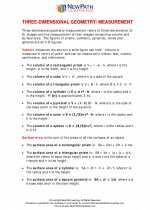
 Worksheet/Answer key
Worksheet/Answer key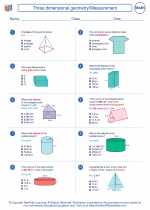
 Worksheet/Answer key
Worksheet/Answer key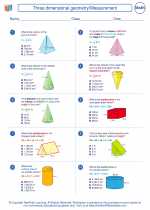
 Worksheet/Answer key
Worksheet/Answer key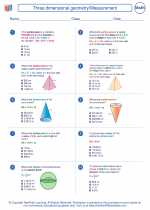
 Worksheet/Answer key
Worksheet/Answer key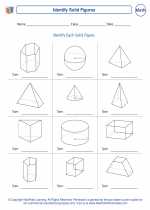
 Worksheet/Answer key
Worksheet/Answer key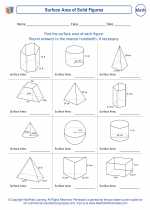
 Worksheet/Answer key
Worksheet/Answer key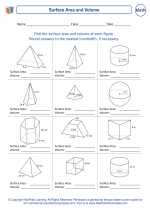
 Worksheet/Answer key
Worksheet/Answer key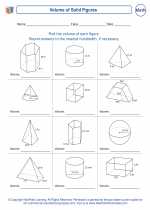
 Worksheet/Answer key
Worksheet/Answer key
 Worksheet/Answer key
Worksheet/Answer key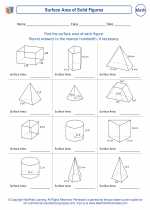
 Worksheet/Answer key
Worksheet/Answer key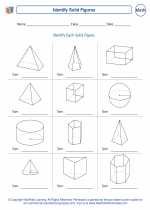
 Worksheet/Answer key
Worksheet/Answer key
